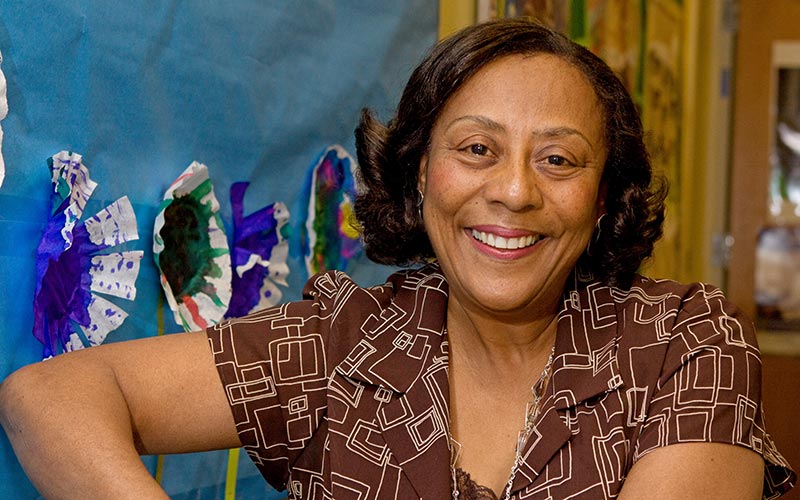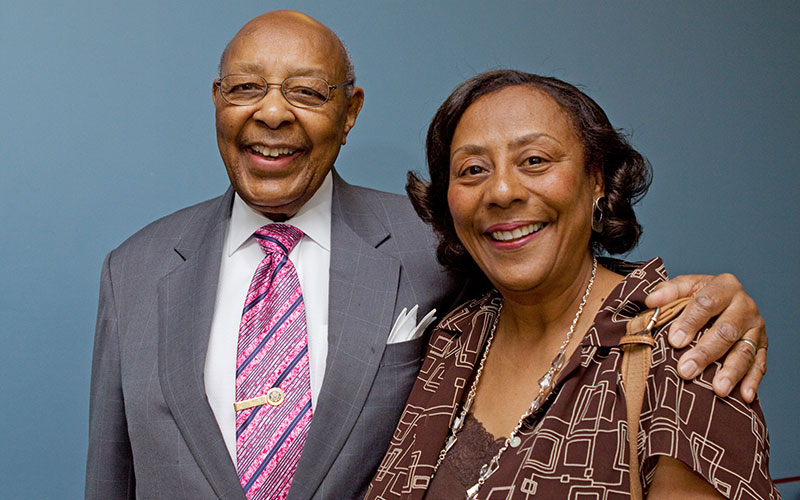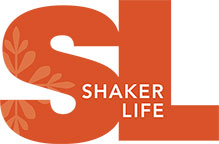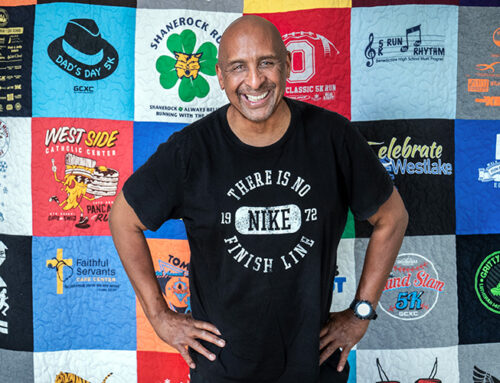Q&A with Shelley Stokes-Hammond
By Sue Starrett

In January 1956, a bomb exploded on Corby Road in the Ludlow neighborhood where a home was being built for a young African-American couple. That terrible incident was the catalyst for the peaceful integration of Shaker Heights. It spurred small groups of neighbors to start meeting in living rooms to get to know each other, build community, and stop panic selling.
Those conversations expanded into block meetings and gatherings at Ludlow Elementary School and area churches. All this led to the 1957 establishment of the Ludlow Community Association by residents who wanted to maintain their neighborhood as a wonderful place to live and raise a family. In 1961, it incorporated in order to make short-term loans to prospective buyers.
After World War II, African Americans had begun moving into the Ludlow neighborhood from nearby Cleveland. One such family was that of Louis and Jeannette Stokes, who bought a home on Albion Road so that their four children would have a good education in the Shaker Schools. The oldest, Shelley, recently articulated – in her Goucher College master’s thesis in historic preservation – the importance of the Ludlow Community Association in the context of the national civil rights movement. In the process, she claimed the story of her family’s history.
Shaker Heights is in the National Register of Historic Places as a Garden City, but, in Shelley’s view, that does not go nearly far enough. Her 2011 thesis, “Recognizing Ludlow – A National Treasure: A Community that Stood Firm for Equality,” makes the case that the U.S. National Park Service should amend Shaker Heights’ inclusion in the National Register to reflect its full heritage – that is, for Shaker to be given its due not merely as a Garden City, but as a national historic landmark for civil rights, and for the Ludlow neighborhood to be recognized as a civil rights heritage site.
She writes in her thesis that the founders and members of the Ludlow Community Association were “pioneers who reversed the tide of white flight, blockbusting, and resegregation….They maintained and protected equal access to home ownership and a good education for the entire community of residents – black, white, Asian, Christian, Jewish – and persuasively argued that the value of that community was greater because it was integrated.”
And these visionary neighbors had neither the Civil Rights Act of 1964 nor the Fair Housing Act of 1968 as bedrock for their actions.
Her thesis also includes a history of the African-American experience in housing and education, from slavery to the middle of the 20th century. She notes that from the early days of Shaker Heights until the mid-1950s, the majority of African Americans living in the city were servants.

Shelley Stokes-Hammond with her father, former U.S. Congressman Louis Stokes, in 2012.
The Van Sweringen Company had instituted restrictive covenants to create club-like privacy in Shaker and reserved the right to approve or veto the purchase of property. These deeds effectively excluded African Americans, Jews, and Catholics from buying in Shaker, even though the Supreme Court had ruled against such practices in 1948.
Shelley and her sisters Angela Stokes and Kathryn Foster Manuel are Shaker Heights High School graduates; their brother, Chuck, and sister, Lori, finished school in Maryland, because the family moved to Silver Spring in 1970, following their father’s election to the United States House of Representatives.
Because Shelley’s teacher and principal at Ludlow Elementary School encouraged her writing, she majored in English at Ohio University. After graduation, she worked for the Bell Telephone system in Maryland for 18 years and was among the first African Americans in management there. Since 1997, she has been a development and public relations officer at Howard University.
This past June, Stokes-Hammond made her case for Ludlow’s inclusion as a civil rights heritage site at a program hosted by the Shaker Heights Public Library, where Shaker Life caught up with her.
What are some of your memories of growing up in the Stokes family?
My father was a civil rights and criminal defense lawyer. He knew what was happening in Ludlow. We moved there in 1960, when I was going into the fifth grade. I spent a lot of time with my grandmother, Louise Stokes. When I was little, I liked to look at her photo album and family Bible, which contained many names and dates. I asked her lots of questions, so she told me stories about my extended family. Later on, she asked me what I’d learned in college, and I began telling her about a class I’d taken in African-American history. When I got to sharecropping, she said, “I know. We called it ‘croppin.’”
I hadn’t realized that this was part of my history, and later visited the only member of my grandmother’s family who hadn’t migrated north from Wrens, Georgia. The place where they grew up was torn down, but next door – and still standing – were the slave quarters. With that, all the pieces came together for me: the African-American experience and home. And that led me to think about the difference Shaker made. It’s such a journey. Each of us has a role to play in this life process; each of us is another link in the chain.
Tell us how growing up in Ludlow helped you advocate for your own children.
I left Bell because I needed to be at home with my sons, who had encountered discrimination in school. They were attending a math-science magnet school in Chevy Chase, Maryland, and were being treated as if they weren’t capable.
I fought for them and for others who had been hurt by our history. I went to the PTA and talked about what had happened to my sons. That led to my co-chairing the Equity Committee to fight for all the kids in the school. I had the Ludlow example and experience in my mind the whole time.
Why did you decide to earn a degree in historic preservation?
Growing up in Ludlow, I knew that learning was valued, and not just for the credentials. I thought about going to law school, but then I discovered Goucher College’s historic preservation program, and it seemed like a way to continue what I learned from my grandmother’s Bible and the stories she told.
It took six years to earn my master’s degree, because I was raising my three sons and working full-time. I took every class that gave me the opportunity to build on my story, from historic documentation to nonfiction writing. I didn’t find the connection between my story and historic preservation until Betsy Bradley [former Shaker resident and Goucher adjunct faculty] made the link. She pointed out that Shaker Heights is recognized on the National Register of Historic Places because of the Van Sweringens and Frederick Law Olmsted – not because of the community’s work with integration and civil rights. I also met [Shaker resident and local history librarian] Meghan Hays along the way, and she became director of my thesis.
Your thesis says that Shaker’s designation on the National Register of Historic Places should be amended to include Ludlow as a civil rights landmark.
Yes. For many years, historic preservation didn’t include the cultural past. Then, places and events in the south – Central High School in Little Rock and the hotel where Dr. Martin Luther King, Jr. was assassinated – received official recognition. But there is nothing to reflect what was happening in the north in the late 1950s and 1960s. During that same time period, African Americans were moving into Ludlow. Many had slavery in their pasts – why else the restrictive covenants? – but they also had the American dream of owning a home.
Because of the Ludlow Community Association’s work against those covenants, Shaker Heights meets the updated federal criteria to be designated a national historic landmark for civil rights. It is time for Ludlow to receive the recognition it deserves. I hope conversations about my research will continue so that one day the National Park Service will amend Shaker’s inclusion in the National Register to recognize our community’s work on open housing and civil rights.



